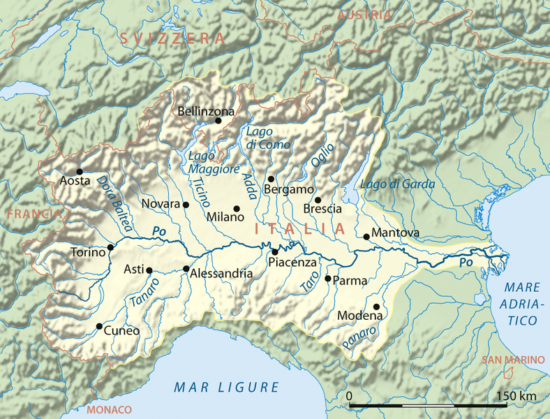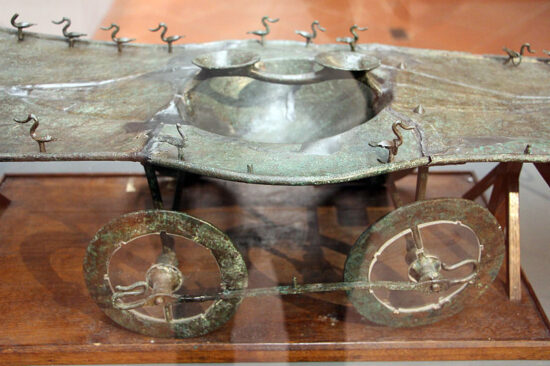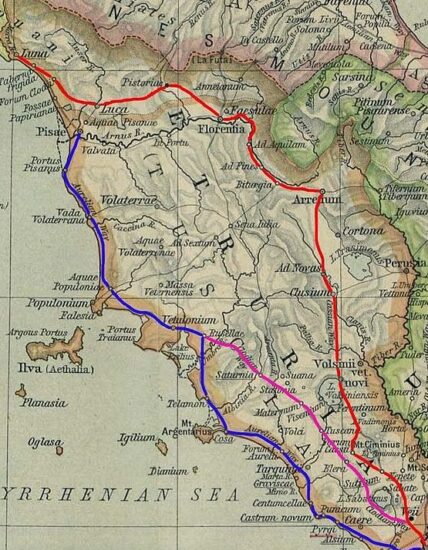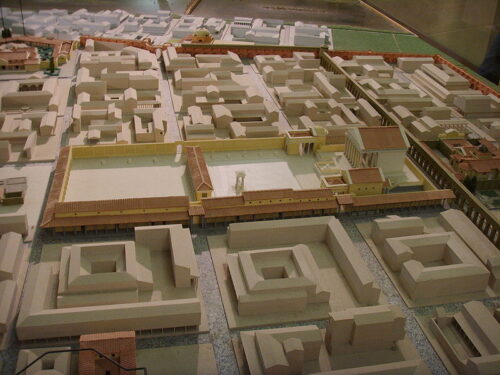Birth
Today’s Florence, the basin formed by the six hills that surround it, specifically the area where the small Mugnone River meets the mighty River Arno (western edge of the city), was inhabited even before the 9th century BC when the Etruscans moved in the wider region.


The Etruscans preferred the safety of the Hill of Fiesole (8 km to the northeast of Florence) that could provide some protection from future raids than the marshy plain of Arno that lay on its feet. It was there they decided to build their main settlement with its protective wall still standing to this day.


Fiesole’s location was not accidental. It stood at a point where the main roads between southern and central Etruria met with those that led to the south of Italy as well as those of the Po valley that led to the cities of the north.



Between 7th and 6th BC Fiesole’s residents established the first wooden bridge or ferry just a few meters from Ponte Vecchio taking advantage of a ford inside the River Arno, near the location of the bridge.



After a series of wining battles and a most decisive one in the Battle of Lake Vadimo (283 BC) where the combined forces of the Etruscans and the Gallic tribes of the Boii and the Senones were defeated, Fiesole became part of the expanding Roman territory. Under Roman rule Fiesole was the seat of an important religious school for augurs (Roman priests/prophets).
Every year twelve young men were sent from Rome to Fiesole to study the art of divination. The town benefited even more with the Roman expansion to the Po Valley and the construction of the Roman road of Via Cassia (around 150 BC) that connected a number of independent Etruscan paths and crossed Arno River at the site of the old Etruscan bridge.



At the time of the powerful Roman general and statesman Sulla (138 BC – 78 BC) a new Roman-Etruscan urban nucleus was born at the site of today’s Donatello Piazzale probably to protect the old Etruscan bridge of Arno while Fiesole was colonized with decommissioned veterans in order to be controlled by the Roman general in a time he was at war with Gaius Marius (Sulla’s second civil war 83–82 BC).



A few years later, around 65 BC Sulla‘s veterans would be entangled in a conspiracy against several members of the Roman senate devised by the Roman senator Catiline.
The eventual failure of that conspiracy and the fact that most veterans of Fiesole had taken part in it, proved to be crucial for the birth of a new Roman town that would control the bridge of Arno and would be loyal to one of the leading figures of the senate at the time, a highflying member of a ruling triumvirate named was Julius Caesar.


A new generation of veteran soldiers bestowed with farming plots in the Valley of Arno, became the residents of the new town built right on the spot of the first pre-historic settlement at the confluence of River Arno and the stream of River Mugnone, hence its first name Fluentia (Pliny the Elder), which later changed into Florentia, the flower city.
The new town followed the classic pattern of Julius Caesar’s cities which was that of a military camp. Rectangular, enclosed by a protective wall, straight roads intersecting at right angles and two main cross-axial streets running north-south, east-west, leading to four towered gates that converged on a central square, where the forum was located. In Florentia‘s case that was the site where Piazza della Repubblica lies today.




